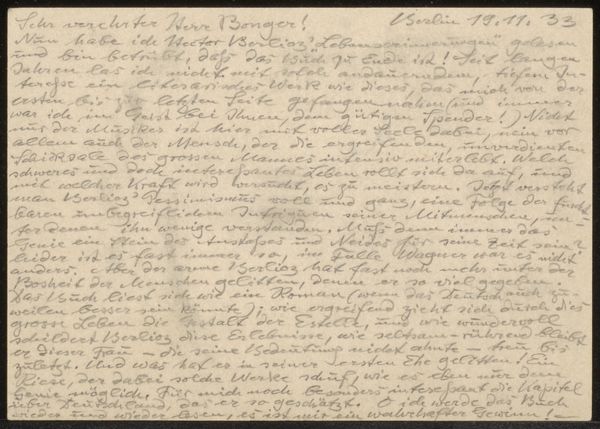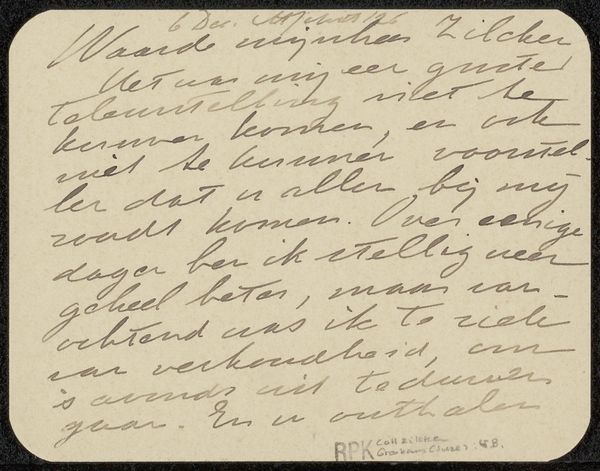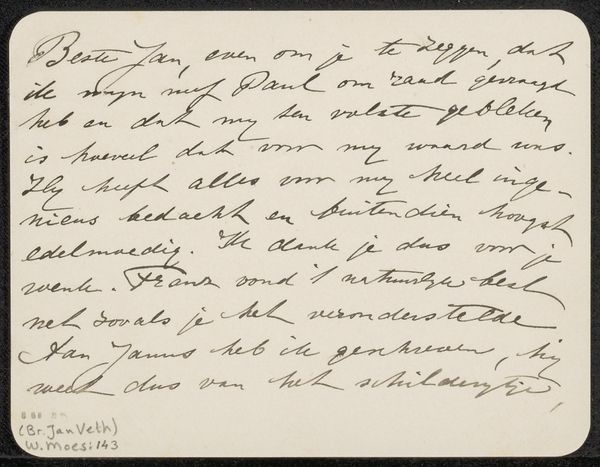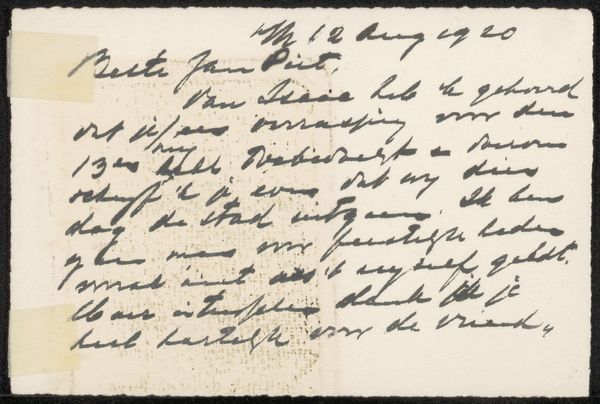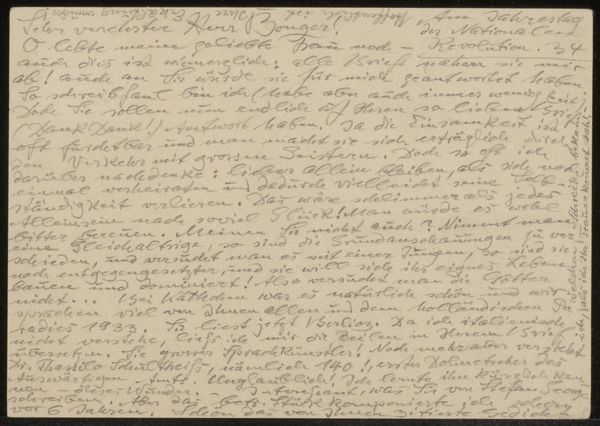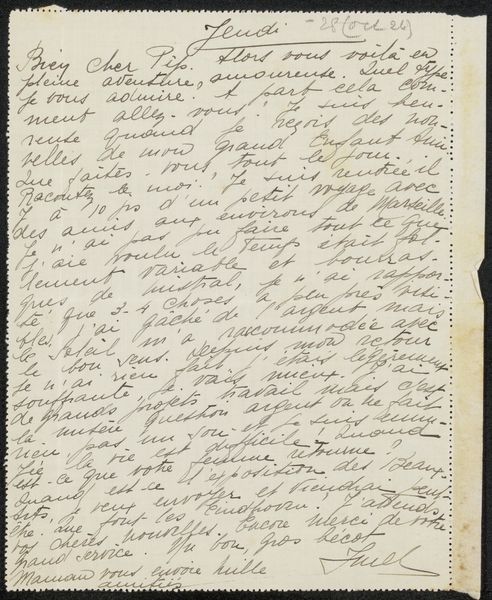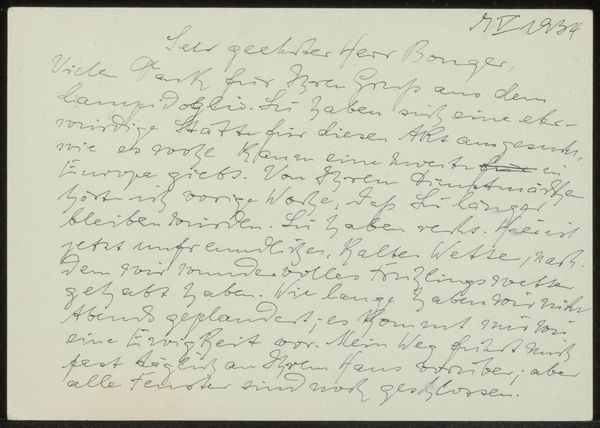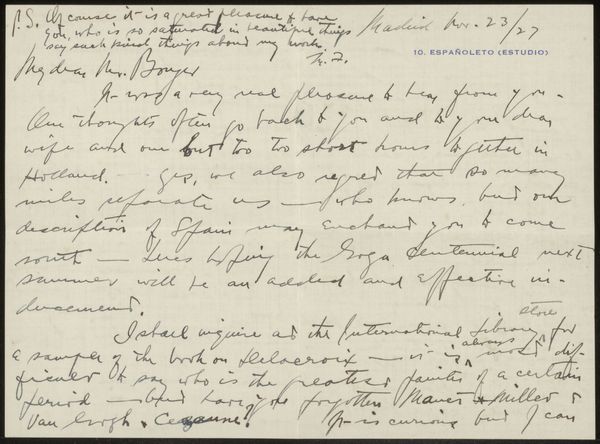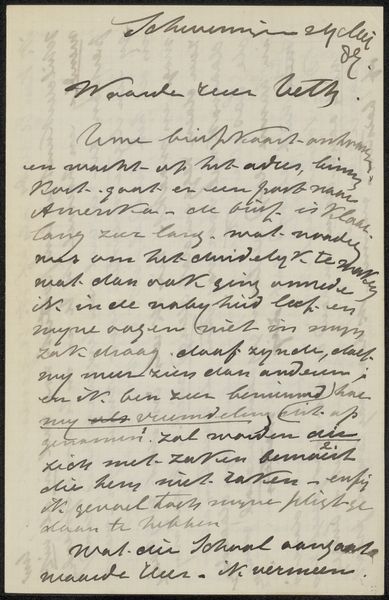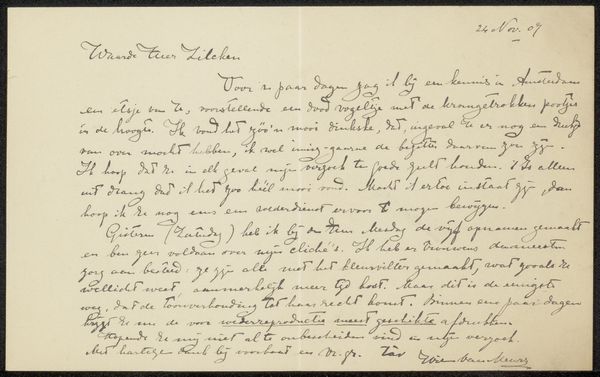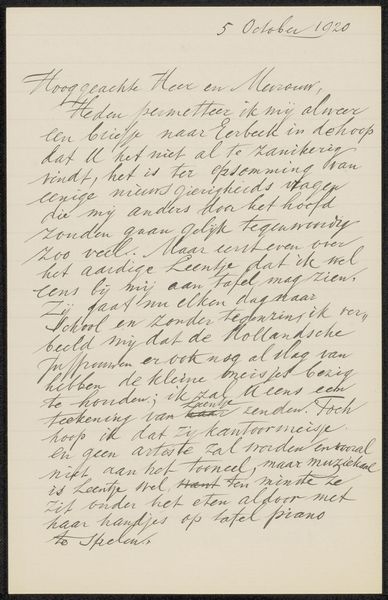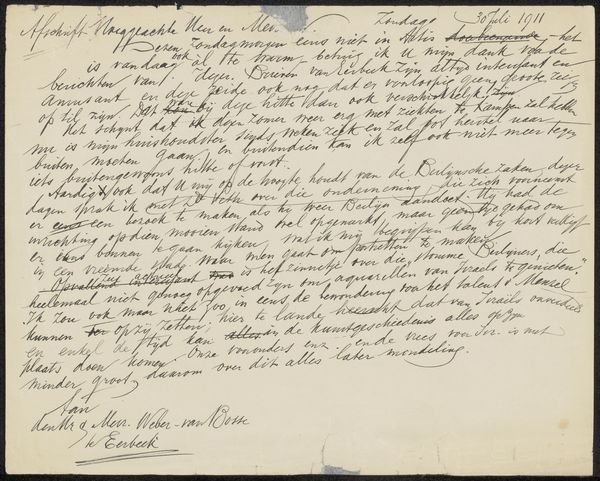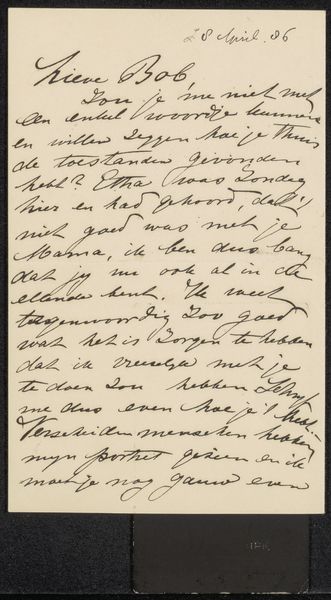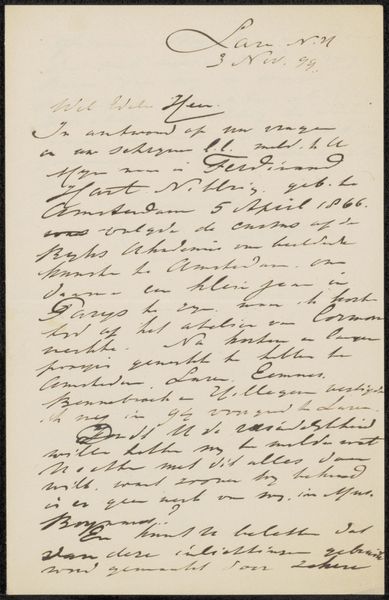
Copyright: Rijks Museum: Open Domain
Curator: So, let’s delve into this intriguing piece. Editor: This is “Briefkaart aan Andries Bonger,” potentially from 1933 by Richard Wintzer, made with ink on paper. At first glance, the handwritten quality gives it an intimate, almost secretive mood. What stands out to you? Curator: I am immediately drawn to the process of its making. Ink on paper…it signifies a specific kind of labor. It's not just about the information conveyed in the letter, but also the very act of writing, the materiality of the ink, the paper's surface, and what it means in terms of social exchange. Editor: I see what you mean. How the material makes you re-evaluate? Curator: Absolutely. The imperfections in the handwriting become significant, reflecting the time, the effort, perhaps even the emotional state of the writer. Do you see how it blurs boundaries between functional communication and deliberate artistry? This wasn't intended as 'high art,' but isn’t there a certain deliberate hand-lettering present? Editor: I think I do. Especially considering it appears to be addressed to Andries Bonger. Curator: Precisely. Considering Bonger’s circle, this letter as object transcends the everyday because of these other influences at play. Editor: So the act of its making, its materials, and intended recipient are essential to its significance? Curator: Exactly. Thinking materially highlights the artist’s means of production and distribution, questioning its worth in relation to its original social context. What do you take from that? Editor: Thinking about the materiality really challenges me to consider how labor and social context define art. I guess it's taught me to rethink value.
Comments
No comments
Be the first to comment and join the conversation on the ultimate creative platform.
